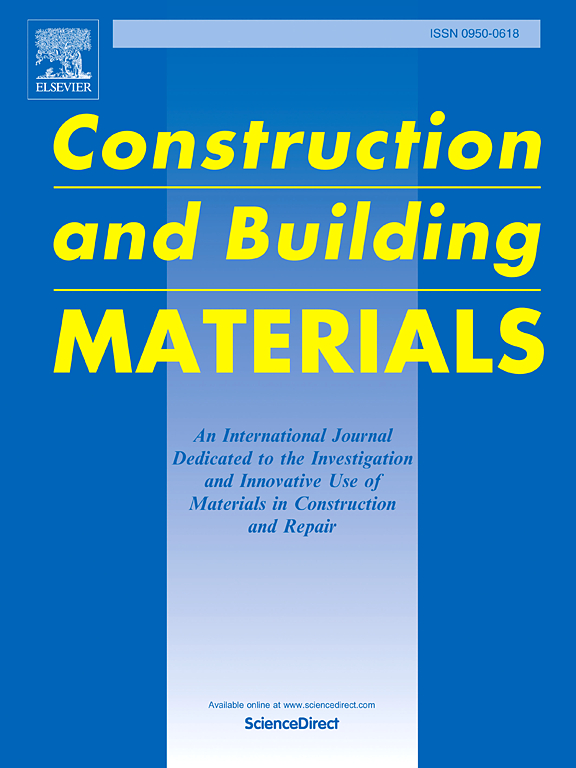Self-catalytic interior decoration materials engineered with birnessite@C-S-H heterostructures: Toward photocatalytic formaldehyde degradation
IF 7.4
1区 工程技术
Q1 CONSTRUCTION & BUILDING TECHNOLOGY
引用次数: 0
Abstract
Photocatalysts require suitable support materials for practical applications, but the high cost and poor compatibility of current carriers hinder large-scale use. Calcium silicate hydrate (CSH), a promising interior decoration material, offers ideal support for photocatalysts. In this study, a birnessite@CSH heterostructure was synthesized using a one-step hydrothermal method. The structure, physicochemical properties, and photocatalytic activity (PCA) of the heterojunction were analyzed at various reaction temperatures and birnessite doping levels. Results revealed that CSH weakened the Mn-O bonds in birnessite, lowering the conduction band position and reducing the band gap. The electrons in the Mn-O band were excited under visible light irradiation, which promoted the transformation of lattice O into active surface O. This activation created oxygen vacancies, which inhibited the recombination of photogenerated electrons and holes, leading to the formation of more active radicals and enhanced PCA. The optimized birnessite@CSH composite achieved 89.92 % degradation of HCHO under visible light, demonstrating its potential for effective indoor air pollution removal.
birnessite@C-S-H异质结构自催化室内装饰材料:光催化甲醛降解研究
光催化剂在实际应用中需要合适的支撑材料,但其成本高、电流载体相容性差,阻碍了其大规模应用。水合硅酸钙(CSH)是一种很有前途的室内装饰材料,为光催化剂提供了理想的载体。本研究采用一步水热法合成了一种birnessite@CSH异质结构。在不同的反应温度和铋矿掺杂水平下,分析了异质结的结构、理化性质和光催化活性。结果表明,CSH削弱了锰氧键,降低了传导带的位置,减小了带隙。Mn-O带中的电子在可见光照射下被激发,促使晶格O转变为活性表面O。这种活化产生氧空位,抑制了光生电子和空穴的重组,导致自由基活性增强,PCA增强。优化后的birnessite@CSH复合材料在可见光下对HCHO的降解率达到89.92 %,显示了其有效去除室内空气污染的潜力。
本文章由计算机程序翻译,如有差异,请以英文原文为准。
求助全文
约1分钟内获得全文
求助全文
来源期刊

Construction and Building Materials
工程技术-材料科学:综合
CiteScore
13.80
自引率
21.60%
发文量
3632
审稿时长
82 days
期刊介绍:
Construction and Building Materials offers an international platform for sharing innovative and original research and development in the realm of construction and building materials, along with their practical applications in new projects and repair practices. The journal publishes a diverse array of pioneering research and application papers, detailing laboratory investigations and, to a limited extent, numerical analyses or reports on full-scale projects. Multi-part papers are discouraged.
Additionally, Construction and Building Materials features comprehensive case studies and insightful review articles that contribute to new insights in the field. Our focus is on papers related to construction materials, excluding those on structural engineering, geotechnics, and unbound highway layers. Covered materials and technologies encompass cement, concrete reinforcement, bricks and mortars, additives, corrosion technology, ceramics, timber, steel, polymers, glass fibers, recycled materials, bamboo, rammed earth, non-conventional building materials, bituminous materials, and applications in railway materials.
 求助内容:
求助内容: 应助结果提醒方式:
应助结果提醒方式:


